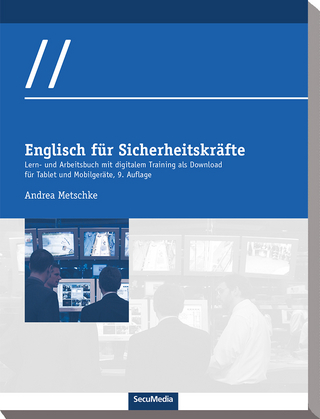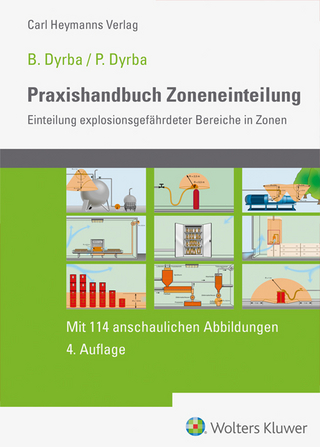
User's Guide to Engineering, A
Pearson (Verlag)
978-0-13-608054-1 (ISBN)
This title is part of Prentice Hall’s ESource series. ESource allows professors to select the content appropriate for their freshman/first-year engineering course. Professors can adopt the published manuals as is or use ESource’s website www.prenhall.com/esource to view and select the chapters they need, in the sequence they want. The option to add their own material or copyrighted material from other publishers also exists.
James Jensen is currently Associate Professor of Civil Engineering and Director of the Environmental Science Program at the State University of New York at Buffalo. Dr. Jensen received his B.S. in Engineering and Applied Sciences from the California Institute of Technology in 1980. He received an MSPH in 1983 and Ph.D. in 1988 from the University of North Carolina at Chapel Hill. His teaching responsibilities are in the area of environmental engineering, with emphasis on environmental chemistry and physicochemical processes. Dr. Jensen's current research interests are aimed at the fundamental chemistry and application of chemical oxidants in natural and engineered systems. Dr. Jensen has served as the Chairman for the Standard Methods Joint Task Group on Oxidant Demand/Requirement. His research work has been funded by the U.S. Environmental Protection Agency, industry, and utilities.
0 Introduction
Welcome to Engineering
How to Use This Book
Engineering Case Studies
Acknowledgments
Part I: Exploring Engineering
Chapter 1: Introduction to Exploring Engineering
1.1 Introduction
1.2 Welcome to Engineering
1.3 How to Discover Engineering
1.4 The Grand Challenges
1.5 Engineering Education: What You Should Expect
1.4.1 Eaton’s first rule: “ ... make practical applications of all the sciences ...”
1.4.2 Eaton’s second rule: “... take the place of the teacher ... [in] exercises.”
1.4.3 Eaton’s third rule: “... attend to but one branch of learning at the same time...”
1.4.4 Eaton’s fourth rule: “Let the amusements and recreation of students be of a scientific character.”
1.4.5 Eaton’s fifth rule: “Let every student daily criticize those whose exercise he has attended ...”
1.6 Summary
Summary of Key Ideas
Problems
Chapter 2: What is Engineering?
2.1 Introduction
2.2 Defining Engineering
2.3 Engineering as an Applied Discipline
2.3.1 Knowledge generation versus knowledge implementation
2.3.2 The role of engineering
2.4 Engineering As Creative Problem Solving
2.4.1 Solving problems
2.4.2 Standard approaches to solving problems
2.4.3 Creative approaches to solving problems
2.5 Engineering as Constrained Optimization
2.5.1 Constraints
2.5.2 Feasibility
2.6 Engineering as Helping Others
2.7 Engineers as Communicators
2.8 Engineering as a Profession
2.9 What Engineering is NOT
2.10 Summary
Summary of Key Ideas
Problems
Chapter 3: Engineering Careers
3.1 Introduction
3.2 Engineering Jobs
3.2.1 Availability of jobs
3.2.2 Introduction to engineer¿ing jobs
3.2.3 Engineers in industry
3.2.4 Engineers in service
3.2.5 Engineers in government
3.2.6 Other engineering jobs
3.2.7 Engineering education as a route to other fields
3.3 Job Satisfaction in Engineering
3.3.1 What does “job satisfaction” mean to you?
3.3.2 Engineering salaries
3.4 Future of Engineering Employment
3.5 Summary
Summary of Key Ideas
Problems
Chapter 4: Engineering Disciplines
4.1 Introduction
4.2 How Many Engineering Disciplines Exist?
4.3 Chemical Engineering
4.3.1 Technical areas
4.3.2 Applications
4.3.3 Curriculum
4.4 Civil Engineering
4.3.1 Technical areas
4.3.2 Applications
4.3.3 Curriculum
4.5 Electrical Engineering
4.5.1 Technical areas
4.5.2 Applications
4.5.3 Curriculum
4.6 Industrial Engineering
4.6.1 Technical areas
4.6.2 Applications
4.6.3 Curriculum
4.7 Mechanical Engineering
4.7.1 Technical areas
4.7.2 Applications
4.7.3 Curriculum
4.8 Major Engineering Subdisciplines
4.8.1 Introduction
4.8.2 Materials engineering
4.8.3 Aeronautical, astronautical, and aerospace engineering
4.8.4 Environmental engineering
4.8.5 Agricultural engineering
4.8.6 Biomedical engineering
4.9 How Do New Engineering Disciplines Evolve?
4.9.1 Introduction
4.9.2 Creation of new field by budding
4.9.3 Creation of new field by merging
4.10 Summary
Summary of Key Ideas
Problems
Part II: Engineering Ethics
Chapter 5: Introduction to Engineering Ethics
5.1 Introduction
5.2 What is Ethics?
5.3 Importance of Engineering Ethics
5.4 Approaches to Engineering Ethics
5.5 Summary
Summary of Key Ideas
Problems
Chapter 6: Professional Ethics
6.1 Introduction
6.2 Academic Ethics
6.3 NSPE Code of Ethics
6.3.1 Introduction
6.3.2 Fundamental Canons
6.4 Other Engineering Code of Ethics
6.4.1 Additional Principles
6.4.2 Discrimination and Harassment
6.4.3 Continuing Education on Ethics
6.4.4 Ethics and Engineering Education
6.5 Examples of Engineering Ethics
6.5.1 Not Reporting Violations
6.5.2 Whistle-Blowing
6.6 Summary
Summary of Key Ideas
Problems
Chapter 7: Beyond Professional Ethics
7.1 Introduction
7.2 Appropriate Technology
7.2.1 Introduction
7.2.2 Example
7.2.3 Appropriate Technology and Engineering
7.3 Environmental Ethics, Sustainability, and Industrial Ecology
7.3.1 Introduction
7.3.2 Sustainability
7.3.3 Industrial Ecology
7.4 Accessibility
7.5 Summary
Summary of Key Ideas
Problems
Part III: Engineering Profession
Chapter 8: Professional Life of Engineers
8.1 Introduction
8.2 What is a Profession?
8.3 Engineering as a Profession
8.3.1 Introduction
8.3.2 Judgment and Discretion in Engineering
8.3.3 Admission to the Profession
8.3.4 Self Policing
8.4 Summary
Summary of Key Ideas
Problems
Chapter 9: Professional Life
9.1 Introduction
9.2 Professional Benefits
9.2.1 Introduction
9.2.2 Job Satisfaction
9.2.3 Variety of Career Oppertunities
9.2.4 Challenging Work
9.2.5 Intellectual Development
9.2.6 Potential to Benefit Society
9.2.7 Financial Security
9.2.8 Prestige
9.2.9 Professional Environment
9.2.10 Technological and Scientific Discovery
9.2.11 Creative Thinking
9.3 Professional Obligations
9.3.1 Introduction
9.3.2 Continuing Education
9.3.3 Giving Back to the Profession
9.4 Practical Issues
9.5 Summary
Summary of Key Ideas
Problems
Chapter 10: Professional Registration
10.1 Introduction
10.2 Why Become a Professional Engineer?
10.3 The Registration Process
10.3.1 Overview
10.3.2 The Accredited Degree
10.3.3 Fundamentals of Engineering Examination
10.3.4 Experience
10.3.5 Principles and Practice Examination
10.4 After Registration
10.5 Summary
Summary of Key Ideas
Problems
Part IV: Engineering Problem Solving
Chapter 11: Introduction to Engineering Problem Solving and the Scientific Method
11.1 Introduction
11.1.1 Engineering problems
11.1.2 The art and science of engineering problem-solving
11.1.3 Engineering solution methods
11.2 Approaches to Engineering Problem Solving
11.2.1 Introduction
11.2.2 Scientific method
11.2.3 Engineering analysis method
11.2.4 Engineering design method
11.2.5 Need for innovation
11.3 Introduction to the Scientific Method
11.3.1 Introduction
11.3.2. Scientific problem-solving process
11.4 Problem Definition
11.4.1 Introduction
11.4.2 Inclusive and exclusive definitions
11.4.3 Disadvantages of definitions that are not specific
11.5 Formulate a Hypothesis
11.5.1 Introduction
11.5.2 Hypotheses as testable statements
11.6 Test the Hypothesis
11.6.1 Testing a hypothesis by experiment
11.6.2 Testing a hypothesis by analysis
11.7 Drawing Conclusions from Hypothesis Testing
11.7.1 Rejecting a hypothesis
11.7.2 Conditionally accepting a hypothesis
11.8 Examples of the Use of the Scientific Method
11.9 Summary
Summary of Key Ideas
Problems
Chapter 12: Engineering Analysis Method
12.1 Introduction
12.1.1 Introduction to the engineering analysis method
12.1.2 Solving analysis problems
12.2 Gathering Data
12.2.1 Introduction
12.2.2 Data collection
12.3 Selecting the Analysis Method
12.3.1 Introduction
12.3.2 Selection of physical laws
12.3.3 Translation into mathematical expressions
12.4 Estimate the Solution
12.4.1 Introduction
12.4.2 Example
12.5 Solving the Problem
12.5.1 Solving mathematical expressions by isolating the unknown
12.5.2 “Golden Rule” of expression manipulation
12.5.3 Manipulating inequalities
12.5.4 Hints for manipulating equations
12.6 Check the Results
12.6.1 Introduction
12.6.2 Use logic to avoid Aphysical answers
12.6.3 Using logic to check expression manipulation
12.6.4 Using estimation to check solutions
12.6.5 Using units to check solutions
12.7 Units
12.7.1 Introduction
12.7.2 Dimensional analysis
12.7.3 Units and functions
12.7.4 Units conversion
12.8 An Example of the Engineering Analysis Method
12.9 Summary
Summary of Key Ideas
Problems
Chapter 13: Engineering Design Method
13.1 Introduction
13.1.1 Introduction to engineering design
13.1.2 Solving design problems
13.2 Generating Multiple Solutions
13.2.1 Introduction
13.2.2 Brainstorming
13.2.3 Methods for generating new ideas
13.3 Analyzing Alternatives and Selecting a Solution
13.3.1 Analyzing alternatives
13.3.2 Selecting a solution
13.4 Implementing the Solution
13.5 Evaluating the Solution
13.6 Design Example
13.7 Design Parameters
13.7.1 Introduction
13.7.2 Example
13.7.3 Uses of design parameters
13.8 Innovations in Design
13.8.1 Introduction
13.8.2 Need for innovation
13.8.3 Design innovation by concurrent engineering
13.8.4 Design innovation by reengineering
13.8.5 Design innovation by reverse engineering
13.8.6 How to innovate
13.8.7 Translating failure into success through innovation
13.9 Summary
Summary of Key Ideas
Problems
Part V: Engineering Problem-Solving Tools
Chapter 14: Introduction to Engineering Problem-Solving Tools and Using Data
14.1 Introduction
14.1.1 Engineering problem-solving tools
14.1.2 Using data
14.2 Accuracy and Precision
14.2.1 Introduction
14.2.2 Accuracy
14.2.3 Precision
14.3 Rounding and Significant Digits
14.3.1 Introduction
14.3.2 Counting the number of significant digits
14.3.3 Exceptions to the rule: numbers with no decimal point and exact numbers
14.3.4 Reporting measurements
14.3.5 Rounding and calculations
14.4 Measures of Central Tendency
14.4.1 Introduction
14.4.2 Arithmetic mean
14.4.3 Median
14.4.4 Mode
14.4.5 Geometric mean
14.4.6 Harmonic mean
14.4.7 Quadratic mean
14.5 Measures of Variability
14.5.1 Introduction
14.5.2 Variance
14.5.3 Standard deviation
14.5.4 Relative standard deviation
14.5.5 Variability and data collection in engineering
14.6 Summary
Summary of Key Ideas
Problems
Chapter 15: Engineering Models
15.1 Introduction
15.2 Why Use Models?
15.3 Types of Models
15.3.1 Introduction
15.3.2 Conceptual models
15.3.3 Physical models
15.3.4 Mathematical models
15.3.5 Other kinds of models
15.4 Using Models and Data to Answer Engineering Questions
15.4.1 Interplay of models and data
15.4.2 Potential errors
15.4.3 Model fits
15.4.4 Using calibrated models
15.4.5 Determining model fit
15.4.6 Are engineering models real?
15.5 Summary
Summary of Key Ideas
Problems
Chapter 16: Computing Tools in Engineering
16.1 Introduction
16.2 Computer Hardware
16.2.1 Computer types
16.2.2 Microprocessors
16.2.3 Memory and mass storage
16.2.4 Input, output, and communication devices
16.3 General Computer Software
16.3.1 Introduction
16.3.2 Operating systems
16.3.3 Communications software
16.3.4 Spreadsheet software
16.4 Engineering and Science Specific Software
16.4.1 Introduction
16.4.2 Programming software
16.4.3 Trends in programming software
16.4.4 Symbolic math software
16.4.5 Computer-aided design
16.4.6 Discipline-specific software
16.5 The Internet
16.5.1 Introduction
16.5.2 Structure of the Internet
16.5.3 Uses of the Internet
16.6 Summary
Summary of Key Ideas
Problems
Chapter 17: Feasibility and Project Management
17.1 Introduction
17.2 Technical Feasibility
17.3 Engineering Economics
17.3.1 Costs of engineering projects
17.3.2 Time value of money
17.3.3 Calculating the present and future value of money
17.3.4 Uniform series
17.3.5 Engineering economics calculations
17.4 Economic Feasibility
17.4.1 Introduction
17.4.2 Comparing alternatives
17.4.3 Example
17.5 Fiscal Feasibility
17.5.1 Introduction
17.5.2 Bonds
17.5.3 Example
17.6 Social, Political, and Environmental Feasibility
17.7 Project Management
17.7.1 Introduction
17.7.2 Project planning
17.7.3 Project scheduling
17.7.4 Critical path method
17.8 Summary
Summary of Key Ideas
Problems
Part VI: Technical Communications
Chapter 18: Introduction to Technical Communication
18.1 Introduction
18.2 Role of Technical Communication in Engineering
18.2.1 Technical communication as a professional skill
18.2.2 Technical communication and employment
18.3 Misconceptions About Technical Communication
18.3.1 Misconception #1: Technical communication is inherently boring
18.3.2 Misconception #2: Engineering communication is passive
18.3.3 Misconception #3: Technical communication is best left to non-engineering specialists
18.3.4 Misconception #4: Good technical communicators are born, not made
18.4 Critical First Steps
18.4.1 Presentation goals
18.4.2 Target audience
18.4.3 Constraints
18.5 Organization
18.5.1 Outlines
18.5.2 Signposting
18.6 Using Tables and Figures to Present Data
18.6.1 Use of tables and figures
18.6.2 Common characteristics of tables and figures
18.7 Tables
18.8 Figures
18.8.1 Scatter plots
18.8.2 Bar charts
18.8.3 Pie charts
18.9 Creativity in Technical Presentations
18.9.1 Creative conciseness
18.9.2 Thinking visually
18.10 Summary
Summary of Key Ideas
Problems
Chapter 19: Written Technical Communications
19.1 Introduction
19.2 Overall Organization of Technical Documents
19.2.1 Introduction
19.2.2 General organization
19.2.3 Abstract
19.2.4 Introduction
19.2.5 Methods
19.2.6 Results and discussion
19.2.7 Conclusions and recommendations
19.2.8 References
19.2.9 Signposting in technical writing
19.3 Organizing Parts of Technical Documents
19.3.1 Paragraph organization
19.3.2 Sentence organization
19.3.3 Word choice
19.4 Grammar and Spelling
19.4.1 Subject-verb match
19.4.2 Voice
19.4.3 Tense
19.4.4 Pronouns
19.4.5 Adjectives and adverbs
19.4.6 Capitalization and punctuation
19.4.7 Spelling
19.4.8 Citation
19.4.9 Other problem areas
19.4.10 Proofreading
19.5 Types of Engineering Documents
19.5.1 Introduction
19.5.2 Reports
19.5.3 Letters
19.5.4 Memorandums
19.5.5 Email
19.6 Summary
Summary of Key Ideas
Problems
Chapter 20: Oral Technical Communications
20.1 Introduction
20.2 Before the Talk: Organization
20.3 Before the Talk: Designing Visual Aids
20.3.1 Number of visual aids
20.3.2 Types of visual aids
20.3.3 Content of visual aids: word slides
20.3.4 Content of visual aids: data slides
20.3.5 Special notes about computer-based presentations
20.4 Before the Talk: Preparing to Present
20.4.1 Practicing oral presentations
20.4.2 Memory aids
20.5 During the Talk
20.5.1 Pre-talk activities
20.5.2 Group presentations
20.5.3 Nervousness
20.5.4 What to say
20.5.5 How to say it
20.6 After the Talk
20.7 Summary
Summary of Key Ideas
Problems
Appendix A: Review of Physical Relationships
A.1 Introduction
A.2 Definitions
A.2.1 Kinematic parameters
A.2.2 Fundamental forces
A.2.3 Other forces
A.2.4 Energy, work, and power
A.3 Decomposition by Vectors
A.3.1 Position vectors
A.3.2 Other vectors
A.4 Conservation Laws
A.5 Gradient-driven Processes
| Erscheint lt. Verlag | 4.11.2020 |
|---|---|
| Sprache | englisch |
| Themenwelt | Technik |
| ISBN-10 | 0-13-608054-5 / 0136080545 |
| ISBN-13 | 978-0-13-608054-1 / 9780136080541 |
| Zustand | Neuware |
| Haben Sie eine Frage zum Produkt? |
aus dem Bereich


